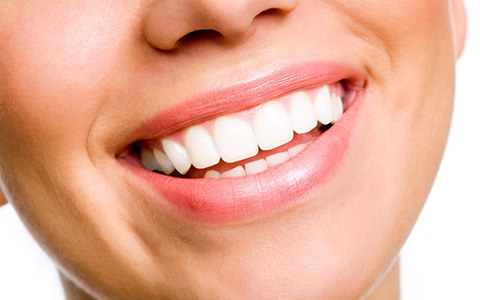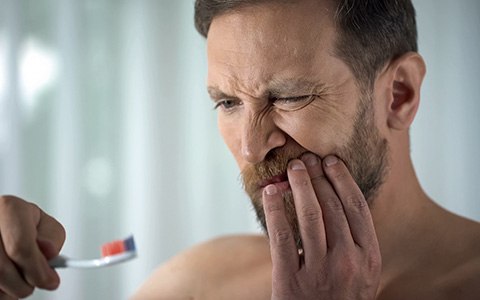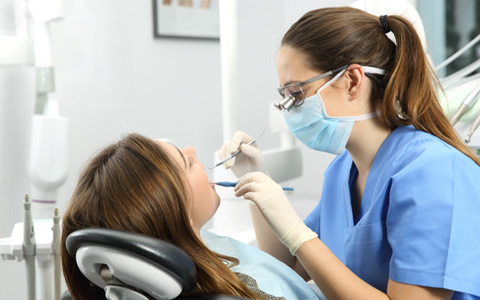Periodontal Disease Treatment – Corte Madera, CA
Getting Your Gum Health Back on Track

One of the most devastating infections you can develop when it comes to your oral health is periodontal disease, also known as gum disease. If left untreated, periodontal disease can cause serious damage to the gums and jaw. Dr. Julie Young, an experienced dentist in Corte Madera, places great emphasis on treating and preventing periodontal disease because good oral health leads to good overall health. Learn more about periodontal disease therapy on this page.
What Is Gum Disease?

Gum disease is an infection of the gum tissue. It occurs when harmful bacteria sneak beneath the gumline, causing inflammation and a range of other symptoms, such as gum recession, bleeding gums, bad breath, and more. Poor oral hygiene, older age, and smoking are some primary risk factors for gum disease.
Gum disease occurs in two main stages:
- Gingivitis is a mild infection, which does not involve any permanent damage to the gums. It can often be reversed with thorough oral hygiene habits.
- Periodontitis is characterized by permanent damage to the gums and bones that support the teeth. It is a leading cause of tooth loss. It may require extensive or complex treatment to address.
The Importance of Treatment

Treatment for gum disease can prevent tooth loss and make your smile feel fresher and look better. Those facts in themselves should provide plenty of motivation to address this condition as promptly as possible.
However, the importance of gum disease treatment in Corte Madera goes much further. In fact, untreated gum disease is associated with a range of systemic health conditions. It has been linked to an increased risk of heart attack, stroke, dementia, preterm birth, and more.
The reason for the connection between gum disease other health problems is still being researched, but it may have to do with the fact that this infection increases the body’s burden of inflammation. It could also be linked to the fact that when bacteria invade the gum tissue, it can infiltrate other bodily systems.
Scaling & Root Planing

Besides tooth decay, did you know that your gums also face a potential threat to oral health? Their well-being is just as crucial as that of your teeth. One significant threat to your gum health is a preventable infection known as periodontal (gum disease). Despite being avoidable, it’s estimated that at least 50% of adults suffer from some form of it. Moreover, it stands as the primary cause of tooth loss. The good news is that we can rescue your smile with scaling and root planing. Click on the button below to learn more!
Do I Need Scaling & Root Planing?

Dr. Young typically recommends scaling and root planing when gum disease has advanced beyond a certain stage. Consider undergoing this treatment if you notice symptoms such as:
- Bleeding during brushing or flossing
- Receding gums
- Persistent bad breath or an unpleasant taste in your mouth
- Shifting teeth
- Difficulty chewing
- Visible plaque buildup
Contact our office right away if you notice any of these symptoms. Dr. Young will assess your gums to determine if scaling and root planing is truly necessary. The more advanced the infection, the more likely this treatment will be recommended.
The Process of Scaling & Root Planing

The initial phase of the procedure involves scaling. Similar to a routine cleaning, our team uses specialized instruments to carefully remove plaque and tartar. Taking an additional step, we specifically target areas below the gumline where bacterial deposits have accumulated.
Following the scaling process, we initiate root planing by smoothing the hidden sections of the teeth beneath the gums. Root planing not only enhances the attachment of your gums to your teeth but also makes it difficult for bacteria to accumulate, lowering the risk of future gum disease.
Aftercare Tips for Scaling & Root Planing

Experiencing mild pain or tenderness for a few days post-treatment is entirely normal. Your teeth may exhibit some sensitivity, and it’s not uncommon for your gums to be swollen or bleed. During the healing process, it’s essential to take proactive measures for infection control. We will provide guidance on the optimal care for your teeth during brushing and flossing, and there may be a prescription for an antibiotic or a specialized mouthrinse to aid in the healing process.
To manage any discomfort, you can use an over-the-counter pain reliever. Typically, within 1 to 2 weeks, your gum tissue will fully heal, and any pain or tenderness will diminish. It’s recommended to steer clear of spicy, excessively hot, or sharp foods until after the complete healing period.
